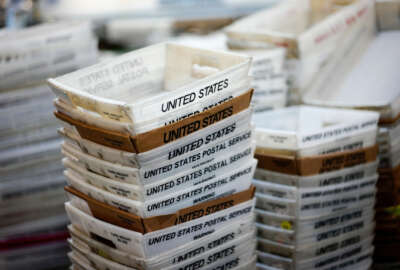
Edge computing enables DNA sequencing, lower risk of contaminants on International Space Station
NASA is looking at edge computing as a means to increase autonomy on the International Space Station, in preparation for missions headed further from Earth.
Astronauts on the International Space Station can’t just clean their environment the way people do on Earth; NASA can’t just send them a bottle of bleach. Keeping their environment free of contamination requires testing constantly. This process used to take six to eight weeks and involve sending fully-cultured petri dishes back down to Earth for analysis, but that changed in 2016 when NASA sent them their own DNA sequencer. After that, only the data had to be sent back down, drastically shortening the time to results. Now, NASA is looking at edge computing as a means to shorten that sample-to-answer time once again.
Sarah Wallace, a microbiologist at Johnson Space Center, said the whole process currently takes five to seven days, with two or three days devoted to actually sending down the data. But with edge computing, that timeframe can be further shaved down to as little as 24 hours. And while that’s important to the astronauts on the ISS, it will be absolutely crucial to NASA’s future plans for space exploration.
“When we think about ISS, we really have a nonexistent lag time in our communications,” Wallace said. “But as we think about [Lunar] Gateway, physical locations on the lunar surface, that may or may not be the case. And obviously, with Mars, that’s not going to be the case. So our goal has always been how do we get the crew an answer without having them be these bioinformatics experts?”
That’s important, because DNA sequencing is complicated work; each sample generates close to half a terabyte of data. So NASA worked with private sector partners to containerize the code and run it on the Spaceborne Computer-2 (SBC-2), an experimental, proof of concept system designed to test the viability of commercial-off-the-shelf hardware in space, and provide edge computing and artificial intelligence capabilities to the ISS.
The main challenge is keeping the code updated and ensuring it’s working the way it’s supposed to. That’s why the next step is to pursue AI and machine learning that will continuously monitor the code to ensure it’s working the way it’s supposed to and providing results that can be trusted. But the models have to be kept extremely small, because connectivity isn’t guaranteed. Different mission-critical applications have to share the limited bandwidth between the ISS and Earth, so the code has to be kept as small as possible to ensure it makes it to the edge in a timely fashion.
Another challenge is the process of transferring the data from the space station computers (SSCs) — which Wallace described as “everyday workhorse computers” — that operate the DNA sequencing device, known as MinION, to the SBC-2.
“Those computers are not powerful enough to be able to do any of this … really computationally heavy part,” she said. “And so we had to have the data stored on the SSC, and then we had to have it moved to the ISS network, where it could be picked up by Spaceborne Computer-2. And just the act of moving these large files [was] not as straightforward as we would do just using a server or something on the ground.”
That required collaboration from a number of different stakeholders to figure out how to make it work. But Wallace said that process is much easier at NASA than elsewhere. She attributes that to an overall culture of problem-solving at the agency. NASA is used to pushing technologies to their limits and pioneering new technologies and processes, she said, so where other agencies may start with roadblocks, NASA moves straight to solutions.
“So while we have those challenges that we all pointed out, I think NASA is more open to ‘OK, we have to find a way to fix it.’ So you shave some of the time off the beginning of them telling you the old way to try it first. And they’re more open to ‘OK, we may not know the exact way to do it now. But we’re going to go through and start working on a new path to get to the to the end goal,’” Wallace said. “So I think that’s why we are successful, is instead of initially throwing up roadblocks and making us go through a bunch of ground testing that we know won’t work, we initially start trying to forge a new path to get to the end result.”
Wallace said the whole idea here is to reduce risk as much as possible. Sending the DNA sequencer not only helped astronauts on the ISS get faster results, but it eliminates the risk of needing to culture large amounts of potential contaminants on the station. She said risk will be further reduced when they send up the MinION 2.0 device this spring. That will be able to handle much of the heavy computational burden itself, without having to link to the SSCs. Not having to perform that data transfer will further reduce the time-to-results, potentially down to as little as eight hours.
“We also are working on taking the risk assessment piece of it one step further. So instead of just having a list of what microbes are there, that involving that risk assessment piece, and that’s something we would want included down the road too: The water is good to drink, happy face, sad face kind of thing,” Wallace said. “The next step for us, like I mentioned earlier, is just giving the crew that autonomy to not have to wait for us to thumbs up/thumbs down a situation. And this is all building on that path to that autonomy for them and and that’s super critical in our exploration beyond low Earth orbit.”
Copyright © 2025 Federal News Network. All rights reserved. This website is not intended for users located within the European Economic Area.
Daisy Thornton is Federal News Network’s digital managing editor. In addition to her editing responsibilities, she covers federal management, workforce and technology issues. She is also the commentary editor; email her your letters to the editor and pitches for contributed bylines.
Follow @dthorntonWFED
Related Stories

‘Grand success’ of OCONUS edge computing test gives Army momentum to tackle tactical cloud next




